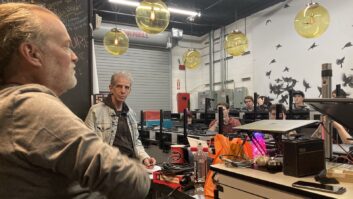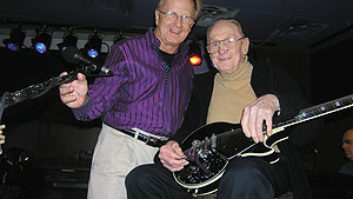There was a point during the Anatomy of a Hit panel at Mix Nashville this past May when producer Dann Huff turned to moderator Peter Cooper and said, with a laugh, “You’re not going to ask me what a producer does, are you? Because I don’t have any idea.” This from a guy who scored a rare hat trick in 2009 with consecutive Number One albums on the country charts from Keith Urban, Martina McBride and a couple of guys named Rascal. When we picked up the conversation for this month’s back page, he elaborated, again with a chuckle: “The producer is the guy who orders lunch.”
It’s an age-old question, bordering on the cliché: What does a producer do? It’s a question we ask all the time here at Mix, and the answers we get run the gamut, changing over time as technologies evolve and the music-business model morphs. There was a time, not that long ago, when top producers picked up the phone and were handed projects. Very rare today. There was a time when budgets allowed producers to book seemingly unlimited time, in multiple rooms, at a top facility. Not so much anymore. There was a time when a single producer worked on a single project, then worked on another one, then another. Today it’s just as likely that multiple producers work on multiple projects at multiple times. There was a time when A&R men roamed the…okay, today producers are the A&R men and women.
There is no job description, there is no right way to do things. Some producers abhor technology as an impediment to their art; others dive into the grid and craft a beat that is radio-ready by the afternoon. Some prefer to do most of their work at home and concentrate on pre-production; others want to bounce off the artists and engineers and live in the environment. Some very talented cats with long track records can’t seem to find a gig; some kid just out of school can blow up with a monster hit. The life of a producer is unpredictable. It’s always been that way.
In this, our annual issue devoted to producers, we asked a lot of questions about techniques and styles, and we got back a lot of different answers. Joe Boyd wants to make decisions early and let the players play, while Nick Launay let us know why he loves tape. Tony Shepperd has gone indie, and Ken Coomer likes to start, naturally, with the drummer. R.S. Field just wants the quickest and cleanest signal path, eschewing “transatlantic cabling.” Nick Raskulinecz, featured on this month’s cover for his work with Alice in Chains, will get you a rock guitar sound that you can take to the bank.
But if there is one common thread, one element of the art and craft of producing that all seem to agree on, it’s that they work for the artist and the song. The legendary Phil Ramone sums it up nicely when he says, “The whole generation of music in the last 10 to 15 years is to the wall — heavy limiting, heavy compression. The purist is going to say, ‘Where is the dynamic range and why is it being screwed with?’ And the counterargument comes out: ‘Well, we have to deal with radio so we want to make sure our record is louder.’ But it still comes down to the song.”
Right on,




